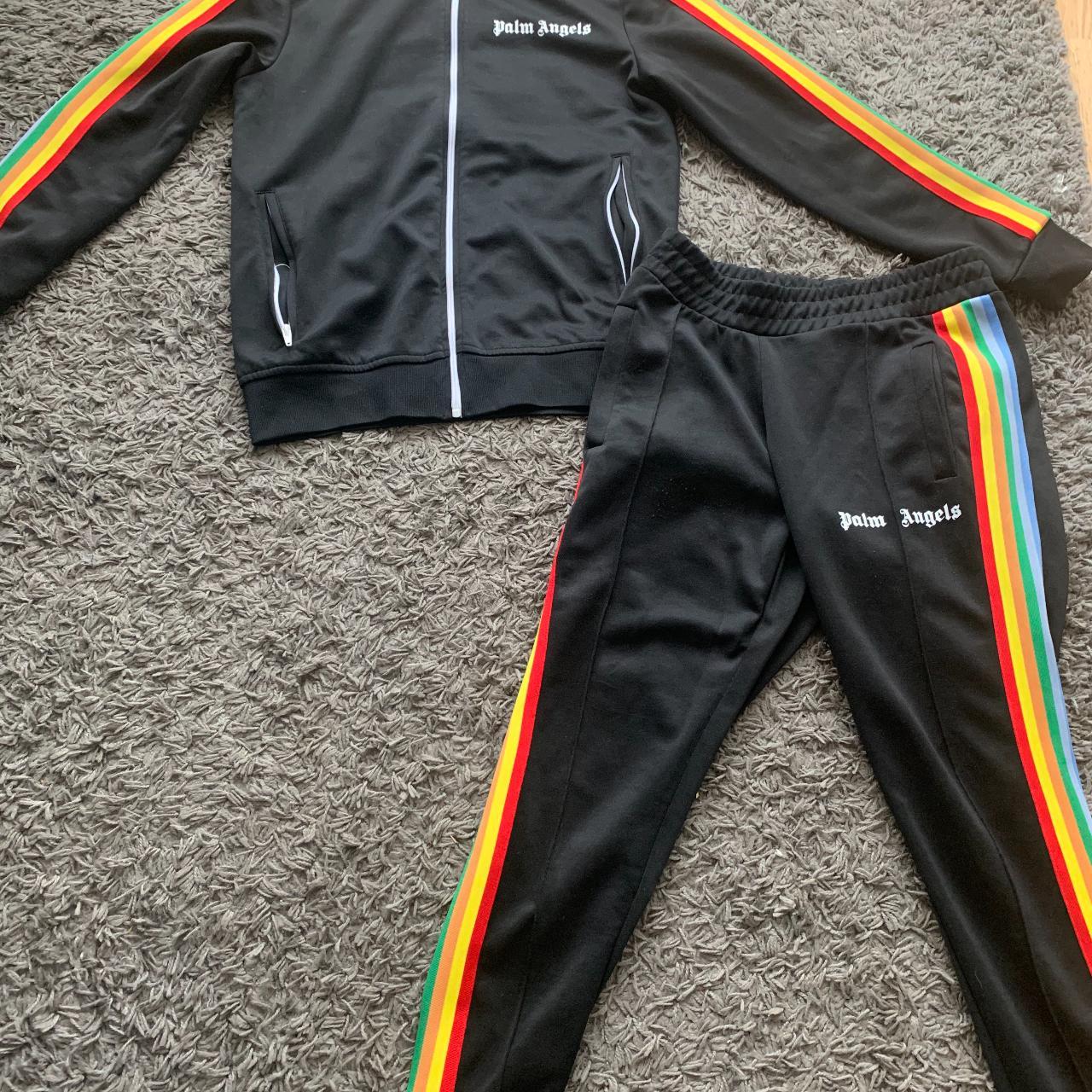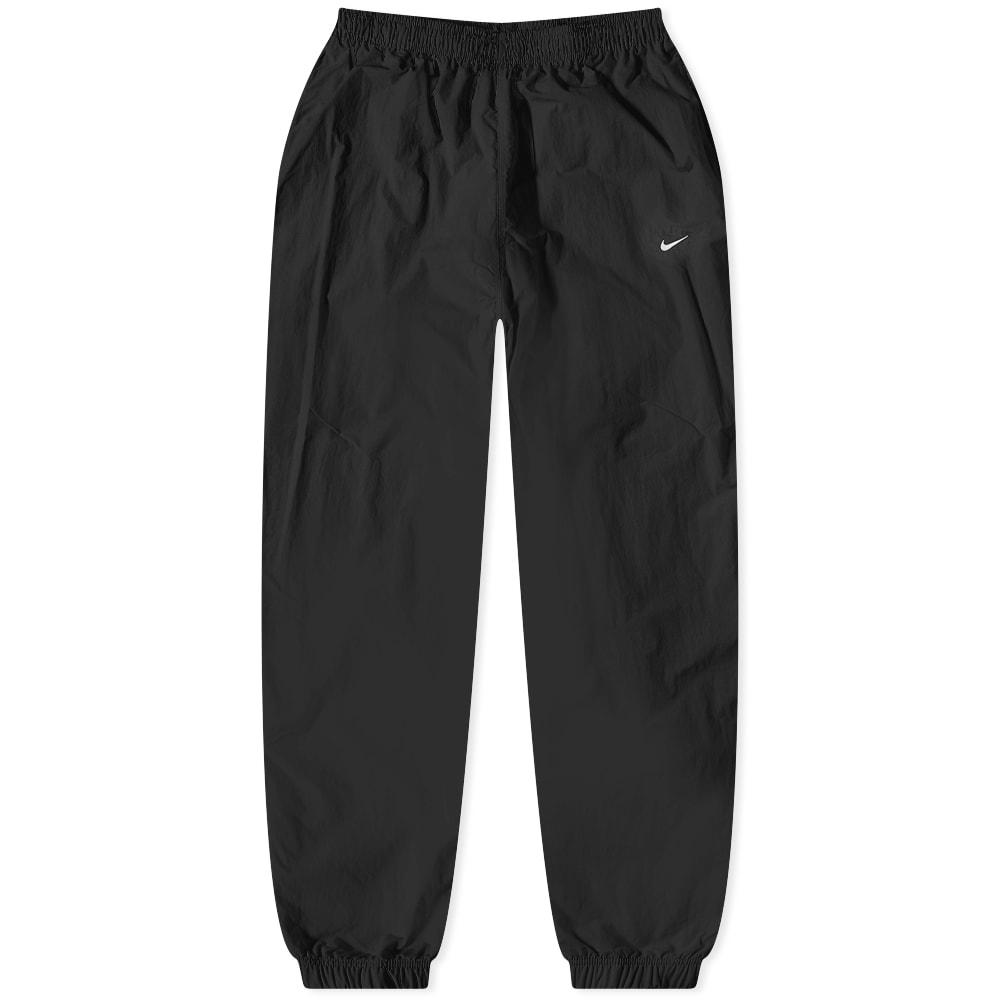Discover Pandipedia
Pandipedia is the world's first encyclopaedia of machine generated content approved by humans. You can contribute by simply searching and clicking/tapping on "Add To Pandipedia" in the answer you like. Learn More
Expand the world's knowledge as you search and help others. Go you!
Overview of 2024 Earnings Performance
In his 2025 shareholder letter, Buffett highlighted that Berkshire’s overall performance in 2024 exceeded his expectations. Notably, despite 53% of the 189 operating companies posting a decline in earnings, Berkshire managed to record operating earnings of $47.4 billion. Buffett emphasized that such operating earnings are the primary metric for evaluating performance rather than figures reported under GAAP accounting standards. This focus on operating results reflects the belief in the long-term value of the company’s investments and underlying business activities[1].
Impact of Investment Income and Treasury Yields
A key insight Buffett shared pertains to the boost from investment income in 2024. He explained that Berkshire benefited from a significant increase in predictable investment income due to higher Treasury yields and an increased holding in highly liquid short-term securities. This improvement in the interest regime helped offset declines in earnings among many operating companies and contributed substantially to the strong overall performance. By choosing to reinvest earnings over relying on potentially volatile capital gains and losses, Buffett stressed the company’s long-term strategy and financial discipline[1].
Sector-Specific Developments in Earnings
Buffett provided detailed commentary on several key business sectors that influenced Berkshire’s earnings trends. In the insurance segment, he noted major growth in the insurance business, and highlighted GEICO’s performance as particularly impressive. He remarked that GEICO, which ranks as the fourth largest auto insurer in the United States, has seen significant transformation in the past five years under Todd Combs’ leadership. Although GEICO still requires further refinements, the progress is evident and positions it as a long-term gem. Additionally, Buffett mentioned that improvements were seen in Berkshire’s railroad and utility businesses, the latter of which reached 100% ownership at the end of 2024, following an increase from approximately 92% ownership with an investment of $3.9 billion. Such details underscore the diversity in earnings performance across Berkshire’s portfolio and the strategic moves needed to enhance returns in different sectors[1].
Emphasis on Operating Earnings and Long-Term Metrics
One of the standout themes in Buffett’s letter is his insistence on the importance of operating earnings. He explained that the calculations reported exclude capital gains and losses—both realized and unrealized—from stocks and bonds held by Berkshire. Buffett noted, 'Even though the annual numbers can fluctuate wildly and unpredictably, our time horizons for these investments often extend far beyond a single year, and in many cases span decades.' By putting the spotlight on operating earnings derived from core business activities, the letter makes it clear that these figures are more indicative of the company’s underlying health and long-term trajectory than short-term GAAP earnings. This approach allows Berkshire to maintain a clear focus on the effectiveness of its business decisions, particularly in the face of temporary operational declines among individual companies within its portfolio[1].
Insights into Business Strategy and Capital Allocation
Buffett’s discussion also sheds light on Berkshire’s broader long-term strategy as it relates to earnings trends. He explained that the majority of shareholder capital remains invested in stocks, particularly U.S. stocks, rather than being held as cash equivalents. This conscious decision to reinvest earnings has not only led to measurable growth but has also enabled Berkshire to accumulate taxable income over time. Buffett drew attention to how his reinvestment strategy has allowed Berkshire, over a period spanning 60 years, to record cumulative tax payments that have grown from an insignificant amount in its early decades to over $101 billion. This historical perspective underscores the belief that reinvesting earnings in good business opportunities is paramount to sustaining long-term growth, even if some operating companies experience temporary downturns in earnings[1].
Managing Risks and Sector-Specific Challenges
In addition to celebrating positive earnings trends, Buffett addressed the potential risks inherent in certain sectors, particularly in the property and casualty (P/C) insurance business. He noted that while P/C pricing strengthened in 2024, this improvement came against a backdrop of increased losses from convective storms. Buffett underscored that the long-term nature of the insurance business, which involves receiving payments in advance and dealing with claim payments over extended periods, requires careful risk management and accurate pricing of future claims. Despite the challenges—such as the possibility that extreme loss events could occur at any time—Berkshire’s approach to underwriting is designed to ensure that the company can bear these shocks without jeopardizing its overall earnings trends[1].
Conclusion
Overall, Buffett’s letter conveys a balanced and detailed account of Berkshire’s earnings trends, with a clear focus on operating earnings and long-term value creation. Even in a year marked by mixed performance at the operating company level, the improvements in investment income, effective risk management in the insurance segment, and proactive strategic reinvestments have contributed to a robust overall performance. The approach of emphasizing steady, predictable growth over the unpredictable nature of capital market fluctuations is a cornerstone of Berkshire’s financial discipline. Buffett’s insights not only highlight the importance of strict capital allocation but also reinforce the significance of maintaining a long-term perspective, irrespective of short-term market challenges. Through these measures, Berkshire continues to demonstrate resilience and strategic foresight, ensuring that its earnings trends remain on an upward trajectory over the long run[1].
Let's look at alternatives:
- Modify the query.
- Start a new thread.
- Remove sources (if manually added).
- Request a manual search from our human research team.
Animal instincts are inherent inclinations of living organisms toward specific complex behaviors, primarily consisting of inborn elements. These behaviors are often performed without prior experience or learning and can be observed in various species. For example, newly hatched sea turtles instinctively move toward the ocean, while marsupials climb into their mother's pouch at birth. Other instinctual behaviors include animal fighting, courtship rituals, and nest building[1].
In evolutionary psychology, a concept known as the 'four Fs' summarizes the basic drives or instincts of animals, which include fighting, fleeing, feeding, and mating. These motivations are linked to hormonal activity in the hypothalamus and play a crucial role in survival[2].
Overall, instincts are fixed patterns of behavior that are generally invariant within a species, differing from simple reflexes which are straightforward responses to stimuli[1].
Let's look at alternatives:
- Modify the query.
- Start a new thread.
- Remove sources (if manually added).
- Request a manual search from our human research team.
Get more accurate answers with Super Search, upload files, personalised discovery feed, save searches and contribute to the PandiPedia.

Meal prepping is an effective strategy for managing your time and ensuring you eat nutritious meals throughout your busy week. By dedicating a little time on the weekend to planning, preparing, and storing meals, you can enjoy the benefits of healthier eating while saving time and reducing the stress of daily cooking.
Understanding Meal Prepping
Meal prepping involves preparing whole meals or portions ahead of time, allowing you to have ready-to-eat nutritious options when you're busy. This approach reduces the likelihood of resorting to unhealthy takeout or convenience foods. There are various meal-prepping methods you can choose from, including:
Make-ahead meals: Preparing full meals in advance that can be stored in the refrigerator and reheated when needed.
Batch cooking: Cooking large quantities of a specific recipe and portioning it out for the week.
Individually portioned meals: Preparing meals in single servings that are easy to grab on the go.
Ready-to-cook ingredients: Prepping ingredients for specific meals ahead of time to save cooking time later[7].
Essential Meal Prep Steps
Plan Your Meals: Start by selecting recipes that you enjoy and know you can execute well. Aim for a balance of flavors and nutritional components. It's smart to plan meals that share similar ingredients to minimize prep time[5][7].
Grocery Shopping: Prepare a detailed grocery list based on your meal plan. Stick to this list to avoid impulse purchases, which can save you both money and time. Consider shopping once a week or using grocery delivery services to streamline this process[5][9].
Organize Your Prep Space: Before you start cooking, clear your countertop and gather all necessary utensils and ingredients. This makes the process smoother and helps prevent distractions[9].
Batch Cooking: Dedicate time to cook your meals. Start by preparing dishes that take the longest, such as soups and stews, and then move on to quicker recipes. This method ensures efficiency and maximizes your time in the kitchen[5][9].
Portion and Store: Once your meals are cooked, portion them out into containers. Invest in stackable, airtight containers to save space in your fridge and help keep meals fresh. Label each container with the dish name and date to keep track of freshness[5][9].
Use Versatile Ingredients: Incorporate ingredients that can be used in multiple dishes. For example, roasted vegetables can serve as a side, topping for grain bowls, or filling for wraps. This approach keeps your meals diverse while reducing prep time[9].
Quick and Easy Meal Prep Ideas

When planning your meals, consider including dishes that are quick to prepare and contain whole, nutritious ingredients. Here are some meal prep ideas:
Breakfast Options: Overnight oats, egg muffins, or smoothie packs are great ways to ensure you have a healthy breakfast ready in the morning. These can be prepped in advance and stored in the fridge or freezer[6][7].
Lunch Choices: Create high-protein lunch boxes or salads that can be made in bulk. Think along the lines of taco stuffed sweet potatoes, BBQ chicken bowls, or Greek salad bowls, which are delicious and easy to prepare in batches[4][6].
Dinner Recipes: Meals like chicken stir-fry, sheet pan roasted veggies, or hearty chili are excellent for meal prep as they can be easily scaled up and frozen for future use. These can be made ahead and served with different sides throughout the week[2][3][9].
Tips for Success
Involve the Family: Get family members involved in the meal prep process. Assign tasks to make it more enjoyable and efficient. For instance, while one person cooks, another could chop vegetables or set up containers[9].
Minimize Food Waste: Be mindful of using all your ingredients. Incorporate any remnants into soups, salads, or other dishes to prevent waste. This not only saves money but also adds variety to your meals[9].
Stay Flexible: If you find a recipe you like but can’t source some ingredients, look for substitutions. Being flexible with recipes helps prevent frustration and creates opportunities for culinary creativity[7].
Enjoy the Process: Meal prepping should not feel like a chore. Listen to music or podcasts while you work and enjoy the process of preparing your meals[9].
By following these strategies and integrating meal prepping into your routine, you can transform your week from potentially chaotic to more organized and nourishing. Embrace this approach and watch as it enhances your overall meal experience during your busy days.
Let's look at alternatives:
- Modify the query.
- Start a new thread.
- Remove sources (if manually added).
- Request a manual search from our human research team.

Yung Filly, born Andrés Felipe Barrientos, rose to fame primarily through his engaging and comedic YouTube content, which he began posting in 2013. His unique personality and ability to connect with audiences resonated widely, particularly through viral collaborations with fellow content creators like Chunkz, especially in hit series such as 'Does the Shoe Fit?'[2][5].
His transition to mainstream success included appearances on various BBC shows starting in 2018 and notable collaborations in the music industry, showcasing his versatility as both a comedian and musician[3][4]. Filly's authenticity and commitment to his craft have established him as a beloved figure in UK entertainment[6].
Let's look at alternatives:
- Modify the query.
- Start a new thread.
- Remove sources (if manually added).
- Request a manual search from our human research team.
Wales Bonner x Adidas Originals Tracksuit
Crafted from recycled polyester and cotton blends, featuring unique silhouettes and a retro three-stripe insignia, offering an elevated take on the classic tracksuit[1].
Gucci Tracksuit
An '80s-inspired cut with modern retro appeal and an all-over logo print, perfect for both casual and stylish occasions[3].
Palm Angels Rainbow Tracksuit
A colorful velour design that embodies laid-back California-cool with rainbow-striped trims, ideal for street-style looks[3].
Pangaia Neon Green Tracksuit
A bold option from Pangaia's Island capsule, made from a blend of recycled and organic cotton, perfect for those wanting to make a statement[3].
Reiss Premier Joggers
Tailored joggers that balance sharpness with comfort, ideal for both lounging and smart-casual outings[4].

Under Armour Essential Fleece Joggers
Grey joggers with a loose relaxed shape, perfect for lounging or gym sessions, made mostly of cotton[6].
Adidas Adicolor Baggy Fit Track Pants
Vintage brown baggy track pants with pintuck detailing, suitable for casual outings or lounging at home[4].
Fear of God Essentials Logo-Appliquéd Joggers
Tapered joggers crafted from soft shell texture, representing quiet luxury while comfortable[6].
Lazy Oaf Logo Tracksuit
An oversized crewneck and tapered joggers with graphic logo prints, combining comfort with a playful look[3].
Gymshark Critical 2.0 Joggers
Dark grey joggers designed for lounging with a skinny shape and adjustable waistband, suitable for everyday wear[6].

AllSaints Raven Cuffed Tracksuit Bottoms
Skinny-fit black joggers that can be styled for daytime casual or relaxed evening looks[6].

M&S Cotton Rich Relaxed Fit Joggers
Super soft brushed jersey joggers perfect for loungewear, can be paired with a matching hoodie[6].
Les Girls Les Boys Logo Tracksuit
A casual set featuring an oversized silhouette with diagonal logo prints, combining comfort and contemporary styling[3].

H&M Cargo Joggers
Breathable cotton cargo joggers with drawstring waist and cuffed hems, perfect for warm weather and streetwear aesthetics[6].
Nike NRG Woven Track Pants
Roomy joggers made from crisp nylon fabric, offering a modern twist on athletic staples[6].
Cos Contrast Stripe Joggers
Milano-knitted joggers in chocolate brown with a sophisticated athletic look, ready to elevate your leisurewear[4].

David Gandy Wellwear Ultimate Joggers
Made from pure organic cotton for a luxury lounging experience, perfect for everyday wear[6].

M&S GOODMOVE Cuffed Zip Pocket Sports Joggers
Moisture-wicking joggers with secure zip pockets, designed for training and outdoor activities[6].
Cheap Monday Contrast Panel Sweatpants
Stylish joggers with contrasting panel design, ideal for a fashion-forward look[7].
Adidas Blue Oxide Tracksuit
Features classic three stripes and made from high-performance recycled material, suitable for casual and active wear[3].
Gymshark Power Joggers
Lightweight joggers designed for both performance and comfort, ideal for workouts or relaxing[5].
Moschino Contrast Panel Tracksuit
High-fashion tracksuit boasting playful branding and generous comfort, perfect for lounging with style[3].
Let's look at alternatives:
- Modify the query.
- Start a new thread.
- Remove sources (if manually added).
- Request a manual search from our human research team.
Economic Contributions and Sustainable Practices
Digital nomads, with their capacity to work remotely, present a unique opportunity to foster sustainable tourism by extending tourist seasons and offering a steady income for local entrepreneurs[8]. Unlike traditional tourists, they often seek longer stays, enabling them to forge deeper connections with local cultures and reduce the environmental impact associated with frequent, short-term travel[6]. Some also pay income taxes if they hold citizenship or residency status and earn income in a place[5]. Their economic contributions include spending on local food, accommodations, coworking spaces and transportation[5]. Studies show that nomads typically spend at least 35% of their income in their host communities[5].
EU policy advisor Cinzia De Marzo believes that digital nomads could accelerate Europe’s digital transformation and that the experiences they seek can provide a model for sustainable tourism[5]. Victoria University of Wellington Professor Ian Yeoman thinks the nomad mindset can push regenerative-first approaches to tourism further[5].
Supporting Local Economies and Communities
A key aspect of sustainable travel for digital nomads involves supporting local economies and communities[1]. This can be achieved by eating at local restaurants and street food vendors, giving them a chance to savor authentic cuisine, while also supporting local businesses[1]. Additionally, shopping at local markets and stores supports the local economy, especially when purchasing handmade items from local artisans[1]. By opting for local food establishments, digital nomads can immerse themselves in the local culture and contribute to sustainable tourism practices[1]. Support local farmers, artisans, and businesses that prioritize sustainability[2]. Whenever possible, avoid purchasing mass-produced items made overseas, as this can undermine local artisans and craftsmen[1].
Minimizing Environmental Impact Through Conscious Choices

Digital nomads can minimize their environmental impact by adopting several eco-friendly practices. These include:
- Transportation: Prioritizing sustainable transportation options like trains and buses instead of flights for shorter distances can significantly reduce emissions[2]. Using public transportation, walking, or biking at destinations further reduces their environmental impact[1][2]. Airline selection matters too; choosing airlines that prioritize sustainability and operate fuel-efficient aircraft is beneficial[2].
- Accommodations: Choosing green hotels or guesthouses committed to responsible practices like energy efficiency, water conservation, and waste reduction is crucial[4]. Staying in eco-lodges or coliving spaces that are designed with sustainability in mind[7].
- Reducing plastic waste: Digital nomads can minimize waste by traveling with reusable water bottles, shopping bags, coffee cups, and cutlery[4]. Avoiding single-use plastics[1].
- Sustainable Consumption: Eat local, seasonal foods, which reduces the carbon footprint associated with food transportation and promotes healthier eating habits[2]. Patronizing establishments that align with sustainable practices, such as eco-friendly hotels or responsible tour operators, supports sustainable development initiatives[3].
Respecting Local Customs and Conserving Resources
Respecting local customs and traditions is also essential for digital nomads[1]. Before visiting a new destination, they should take the time to learn about the local customs and etiquette[1]. Some ways to conserve resources are taking shorter showers and reusing towels to conserve water; avoid excessive use of air conditioning or heating[1]. In accommodations, be mindful of energy usage by turning off lights and unplugging electronics when leaving the room[1].
Ethical Wildlife Tourism
Digital nomads interested in wildlife tourism should ensure their activities are ethical and responsible[1]. This involves supporting wildlife sanctuaries that prioritize animal welfare and avoiding places that exploit animals for entertainment[1]. When observing wildlife, maintaining a safe distance ensures the animals are not disturbed or stressed[1]. Also make a conscious effort to avoid purchasing products made from endangered species[1].
Community Engagement and Skill Sharing
Digital nomads can further contribute to sustainable tourism by volunteering for local community projects during their travels[1]. They can also donate to local charities and organizations that support sustainable development[1]. Furthermore, they may also engage in skill-sharing to assist local communities with web design, marketing, or content creation[6]. According to Piboonrungroj, the importance of nomads in developing the local creative economy is notable[5]. More than half of the economic production of Chiang Mai’s creative sector comes from people who aren’t formal residents[5].
Advocating for Sustainability and Responsible Tourism
Digital nomads can use their platforms to advocate for environmental sustainability[2]. This includes sharing eco-friendly practices, supporting environmental causes, and raising awareness about climate change and conservation efforts[2]. They also can promote responsible tourism through social media and writing, highlighting sustainable practices they encounter during their travels[1].
Leaving No Trace
A fundamental principle of sustainable travel is leaving no trace, ensuring the environment and local communities are not harmed[1]. Clean up after yourself by properly disposing of trash and leaving public spaces clean and tidy. Avoid bringing non-native plants or animals to new areas, as invasive species can harm local ecosystems[1].
Government and Policy Support
Governments seeking to leverage the nomad opportunity can implement visa programs that allow nomads to stay for extended periods[5]. This allows for the collection of quantitative data on their contributions to the local economy, such as tax dollars and local spending[5]. Providing incentives for nomads to spend their money locally can also be effective, such as through discounts at local businesses or reduced tax rates for those who contribute to the local economy[5]. Support initiatives that encourage skill-sharing and volunteering between nomads and host communities[5]. By measuring nomads' contributions to local economies, governments can understand the value of this demographic and support a more sustainable and creative approach to welcoming overseas travelers[5].
Let's look at alternatives:
- Modify the query.
- Start a new thread.
- Remove sources (if manually added).
- Request a manual search from our human research team.
Get more accurate answers with Super Search, upload files, personalised discovery feed, save searches and contribute to the PandiPedia.
Transcription: Did you know that Google is constantly enhancing its search quality to better serve users? Since the launch of RankBrain in 2...
Let's look at alternatives:
- Modify the query.
- Start a new thread.
- Remove sources (if manually added).
- Request a manual search from our human research team.

Yes, VR therapy can improve mental health outcomes. Studies indicate that it offers effective treatment options for various psychiatric conditions, including PTSD, phobias, and anxiety disorders. VR therapy allows for safe, controlled exposure to stressful stimuli, providing an individualized approach to treatment that can significantly reduce symptoms and enhance positive functioning[1][3].
Additionally, VR therapy engages patients more fully in the therapeutic process, making it a compelling alternative to traditional methods. Patients can confront their fears at their own pace, which may lead to better therapeutic outcomes compared to conventional exposure therapies[4][2].
Let's look at alternatives:
- Modify the query.
- Start a new thread.
- Remove sources (if manually added).
- Request a manual search from our human research team.
Deep neural networks have revolutionized many fields, particularly image recognition. One significant advancement in this domain is the introduction of Residual Networks (ResNets), which address challenges related to training deep architectures. This blog post breaks down the concepts from the research paper 'Deep Residual Learning for Image Recognition,' detailing the main ideas, findings, and implications for future work in the field.
The Challenge of Deep Neural Networks
As neural networks grow in depth, they become increasingly difficult to train due to several issues, including the degradation problem. This phenomenon occurs when adding more layers results in higher training error, counterintuitively leading to worse performance on benchmarks. The authors hypothesize that instead of learning to approximate the desired underlying function directly, it's easier to learn a residual mapping, which represents the difference between the desired output and the initial input[1].
To address this, the authors propose a deep residual learning framework. Instead of hoping that a few stacked layers can model a complex function directly, ResNets reformulate the layers to learn residual functions relative to the layer inputs, thereby promoting easier optimization and improved accuracy with increased network depth.
The Structure of Residual Networks
Residual Networks incorporate shortcut connections that bypass one or more layers. This allows the network to learn residual functions, effectively simplifying the learning task. The formulation includes an identity mapping, making it easier for the optimization algorithms to incorporate the original input, thereby accelerating convergence[1].
The backbone of a ResNet includes components like convolutional layers and batch normalization (BN), which work together to stabilize and accelerate training. The authors demonstrate that their ResNet architecture achieves a notable reduction in error rates on standard datasets, achieving significant competitive results compared to existing methods.
Key Findings and Experiments

In their experiments, the authors evaluated ResNets across multiple benchmarks, including ImageNet, CIFAR-10, and COCO detection tasks. They found that deeper networks (up to 152 layers) consistently outperform shallower networks like VGG, which uses up to 19 layers. For instance, a ResNet with 152 layers achieved a top-5 error rate of 3.57%, compared to 7.3% for the VGG-16 model[1].
Moreover, the paper presents compelling evidence that residual learning allows for deeper architectures without suffering from the degradation problem exhibited by plain networks. This is illustrated through training procedures that highlight the lower training errors and improved validation performance for deeper ResNets[1].
Architectural Innovations
![Table 6. Classification error on the CIFAR-10 test set. All methods are with data augmentation. For ResNet-110, we run it 5 times and show “best (mean±std)” as in [43]. Table 6. Classification error on the CIFAR-10 test set. All methods are with data augmentation. For ResNet-110, we run it 5 times and show “best (mean±std)” as in [43].](https://askpandipro.s3.amazonaws.com/users/48/documents/142/tables/4.png?AWSAccessKeyId=AKIAQT4QH3CHNPX5WHX7&Signature=7bfQ34HHdQfpqGlmyMstTzANED8%3D&Expires=1750912732)
The design of ResNets is grounded in practical considerations. For instance, the authors employed a bottleneck architecture in very deep ResNets. This involves using short, narrow layers (commonly 1x1 convolutions) to reduce dimensionality before the main processing occurs, thereby maintaining complexity while allowing for deeper networks. They tested various configurations, confirming that the addition of these bottleneck layers does not significantly increase the number of parameters, but yields much better performance[1].
Implications for Future Research
The insights gained from deep residual learning have profound implications for future research in neural network architecture and optimization. One of the significant takeaways from the study is that while deeper networks can achieve remarkable accuracy, they also necessitate careful design to mitigate issues related to overfitting and saturation of activations.
The authors also highlight the iterative nature of developing effective network architectures, noting that future developments might involve exploring multi-scale training strategies or advanced techniques for optimizing residual connections and layer compositions.
Conclusion
Deep residual learning introduces a transformative approach to training deep neural networks, particularly for image recognition tasks. By reformulating how layers interact and utilizing residual functions, researchers and practitioners can develop more powerful models that maintain high accuracy even as complexity increases. The advancements presented in this paper set a robust foundation for continuing innovations within the realm of neural networks, promising significant enhancements in various applications beyond image recognition[1].
With these developments, the field is well-positioned to tackle even more complex challenges in visual recognition and other domains where deep learning frameworks can be applied.
Let's look at alternatives:
- Modify the query.
- Start a new thread.
- Remove sources (if manually added).
- Request a manual search from our human research team.

Technology's impact on professional sports has been both profound and transformative, reshaping various elements of the athletic landscape. From improving athlete performance to enhancing fan engagement, the integration of advanced technologies has fundamentally altered how sports are played, managed, and experienced.
Enhanced Athlete Performance

One of the key areas where technology has made significant strides is in the improvement of athlete performance. The use of wearable technology—such as fitness trackers and biometric sensors—has become commonplace. These devices enable athletes to monitor vital statistics like heart rate, caloric expenditure, and even sleep patterns, allowing coaches and athletes to fine-tune training regimens for maximum efficiency and injury prevention[2][8]. For instance, heart rate monitors help trainers assess the intensity of workouts and adjust them in real-time to optimize performance without risking overtraining[8].
Artificial Intelligence (AI) plays a crucial role in this optimization process as well. AI algorithms can analyze the data collected from wearables to identify injury risks and suggest personalized training programs that adapt to an athlete's changing physical condition[8]. The integration of AI in video analysis allows teams to dissect gameplay footage meticulously, uncovering tactical insights that inform strategy and skills improvement for individual players[8].
Revolutionized Game Experience and Officiating
Technological advancements have also transformed the game experience for athletes and spectators alike. Innovations such as goal-line technology and the Video Assistant Referee (VAR) system allow for more accurate officiating, minimizing human error during critical moments in games[2][3]. Such systems ensure that decisions made during matches are substantiated with technological validation, thereby fostering fairness and integrity in sports.
Similarly, technologies like Hawk-eye are utilized in various sports to track the trajectory of balls and confirm whether they are in or out, enhancing the accuracy of officiating[1][3]. These advancements have revolutionized how disputes are settled in professional matches, significantly impacting gameplay and outcomes.
Advanced Analytics for Strategic Insights

The rise of big data and data analytics in sports has transformed how teams evaluate athlete performance and develop strategies. Teams employ data analytics to assess not just player statistics but also the effectiveness of game strategies against specific opponents[5][7]. This approach allows coaches and management to make informed decisions on player recruitment and training, effectively improving team dynamics and competitiveness. Through real-time performance metrics, teams can adjust strategies during games for immediate feedback and adaptation[7].
Beyond player performance, the commercial side of sports has also benefited greatly from analytics. Teams gather extensive data on fan behavior and engagement, which helps tailor marketing and sponsorship strategies, leading to more lucrative partnerships[7] and enhanced fan experiences.
Improved Fan Engagement and Experience
In terms of fan experience, technology has redefined how audiences interact with sports. The integration of augmented reality (AR) and virtual reality (VR) has created immersive experiences that allow fans to engage with games in groundbreaking ways. Fans can use AR to view real-time stats and player information, transforming traditional viewing into an interactive event[2][9].
Moreover, VR technology enables fans to experience games from the player’s perspective, providing a unique vantage point that deepens their connection to the sport[8]. Smart stadium features with high-speed Wi-Fi, mobile apps, and interactive screens enhance in-person attendance, making live games more enjoyable and convenient[7][9].
As spectators increasingly demand personalized experiences, the adoption of technology in stadiums continues to rise, with fans able to order food, access instant replays, and manage their game day experience through mobile devices[7].
Ethical Considerations and Future Trends
While the benefits of technological advancements in sports are abundant, ethical considerations surrounding data privacy and performance enhancement have emerged. The monitoring of athletes' biometric data raises concerns regarding consent and the potential misuse of such information[7][9]. Furthermore, performance-enhancing technologies pose moral dilemmas in terms of what constitutes fair competition[6][7].
Looking ahead, the growth of AI, wearable technology, and the Internet of Things (IoT) is expected to continue shaping the sports landscape. As teams and organizations embrace these innovations, strategic investments in technology are predicted to enhance both athlete performance and the overall game experience. The intersection of sports with digital capabilities will likely lead to further customization of experiences, allowing organizations to attract new demographics and adapt to changing consumer preferences[4][9].
Conclusion
In summary, the infusion of technology into professional sports has redefined various aspects of the industry, from athlete training and performance analysis to fan engagement and officiating. As technological capabilities evolve, the relationship between sports and technology will undoubtedly deepen, presenting new opportunities and challenges for stakeholders across the global sports landscape. In navigating this dynamic terrain, organizations must remain vigilant regarding ethical considerations while embracing the innovations that will continue to drive the future of sports.
Let's look at alternatives:
- Modify the query.
- Start a new thread.
- Remove sources (if manually added).
- Request a manual search from our human research team.



































